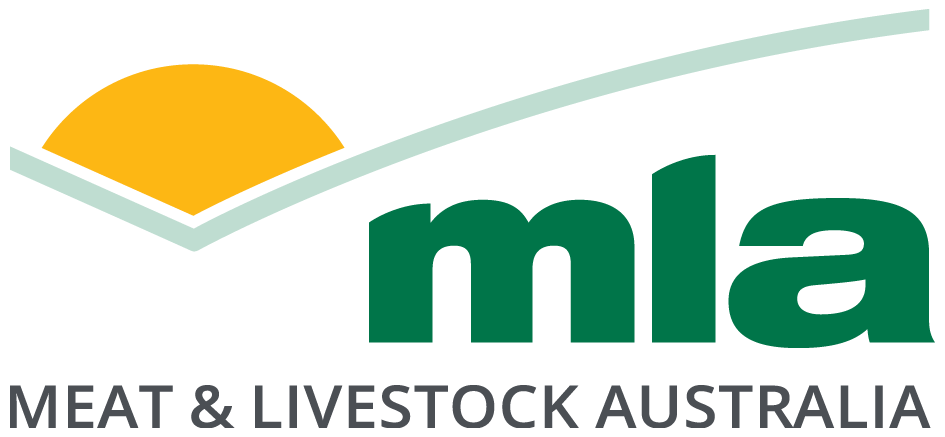Subscribe to The Weekly e-newsletter
News, views and advice delivered to your inbox every Friday. Covering producer case studies, industry news, market updates, on-farm tools and more, this e-newsletter is your one-stop shop for the latest in the red meat industry.
Rangelands Living Skin
The rangelands represent a large amount of Australia’s (80%) and NSW’s (40%) land mass, and with much of the rangelands dedicated agriculture, they are incredibly important production area.
The Rangelands Living Skin is a four-year project linking farming families, scientists and other collaborators to evaluate cost-effective practices – chosen by producers – that focus on regenerating the NSW rangelands to support production now and into the future.
The project will create an evidence-base for helping widespread adoption of practices that benefit soil, plants, animals and people – the living skin of the rangelands.
Led by NSW Department of Primary Industries and funded by Meat & Livestock Australia, this project is a significant investment in the southern rangelands.
These are practices such as:
- grazing management
- water management (ponding and banks)
- biological inputs
- new or multi-species plantings.
This means more reliability from year to year, improved pasture health, improved groundcover, more feed for livestock and recovery of plants after dry conditions.
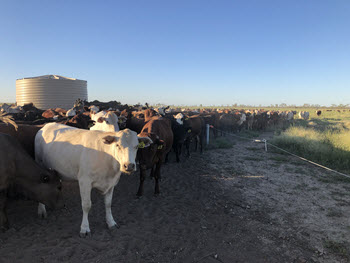 |
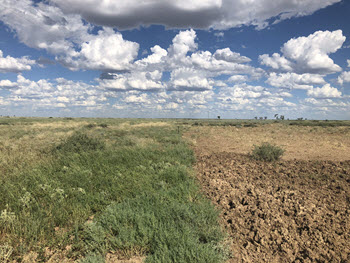 |
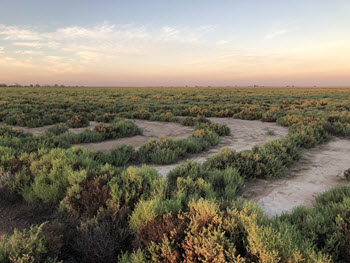 |
Project outcomes
The project aims to see increased productivity on up to 1 million hectares.
It will validate rangeland management practices that producers can confidently adopt to improve ecosystem function and ultimately enhance their grazing businesses.
The Project Team seeks to answer such questions as:
- What cost-effective practices improve pasture composition and production, ground cover, soil carbon and livestock carrying capacity in rangeland landscapes?
- How can these practices diversify farm income, for example with carbon farming or groundcover incentives? And how has the overall business performance changed?
- What are the major drivers of soil carbon sequestration in western NSW, and how are these linked to management?
- How do we best measure soil carbon and natural capital across different land types and management systems?
Practices being trialled
The Project Team is focused on monitoring response of soil (including carbon, biology and function) and the landscape (including ground cover, biodiversity, productivity and function) to a number of practices utilising animals, mechanical interventions, plants, and soil amendments. Specifically, the project is investigating:
- The role of grazing management in improving soil and landscape function, including rotational grazing and high-intensity animal impact. Rotational grazing management (short periods of grazing, followed by long periods of pasture rest, with a flexible and adaptive approach) is hypothesised to improve pasture quality, ground cover and productivity. Achieving high-intensity animal impact by running a large herd in a short but intense period over hard-set soil surfaces like a clay pan will is hoped to break-up surface crusts, add nutrients and organic material to the soil and improve water infiltration.
- The use of mechanical interventions, such as ponding, banking and ripping lines in hardened soils, to increase water infiltration and retention in the landscape.
- Introducing new plant species, including perennial shrubs, annual legumes, multi-species crops and no-kill cropping. Perennial shrubs (old man saltbush) are sown to explore whether their deeper root systems improve soil function and pasture productivity. Multi-species plantings will be sown to explore if diverse plants (and the unique role each plant species offers to soil functionality) influences soil and landscape health. The potential of annual-hard seeded legumes to survive and increase soil health in rangeland environments will also be evaluated.
- No-kill cropping, where forage species are sown into existing perennial grassland, is also being trialled. The hypothesis behind no-kill cropping is that the existing perennial plants maintain a functioning soil and landscape system, which allow the crops to benefit from the undisturbed soil, water, carbon and nutrient cycles and thus be more resilient challenging climatic seasons.
- Finally, the impact of several practices related to soil amendments, including biological inputs (vermicast), biochar and gypsum, on plant growth, soil microbiology and carbon will be evaluated.
Meet the producers
This collaborative research is being undertaken on diverse rangeland production systems with four demonstration and trial sites. These four core producers are:
Gus and Kelly Whyte, Wyndham Station and Willow Point (Wentworth, NSW)
Graham and Cathy Finlayson, Bokhara Plains (Brewarrina, NSW)
Andrew and Megan Mosely, Etiwanda (Cobar, NSW)
Glenn Humbert and Julie Conder, Gurrawarra (Bourke, NSW)
Hear from these producers about their involvement in the project.
An additional 20 ‘Observer’ producers are also involved, taking part in monitoring on their own properties and attending the Rangeland Living Skin field days and other events. Importantly, observer producers offer the opportunity to expand the adoption of practices at scale as results from the research become known, and provide a network of support for the producers to continue learning and implementing changes beyond the life of the project. The map below shows the diverse locations of the four key producers (red) and the spread of the 20 observers (yellow).
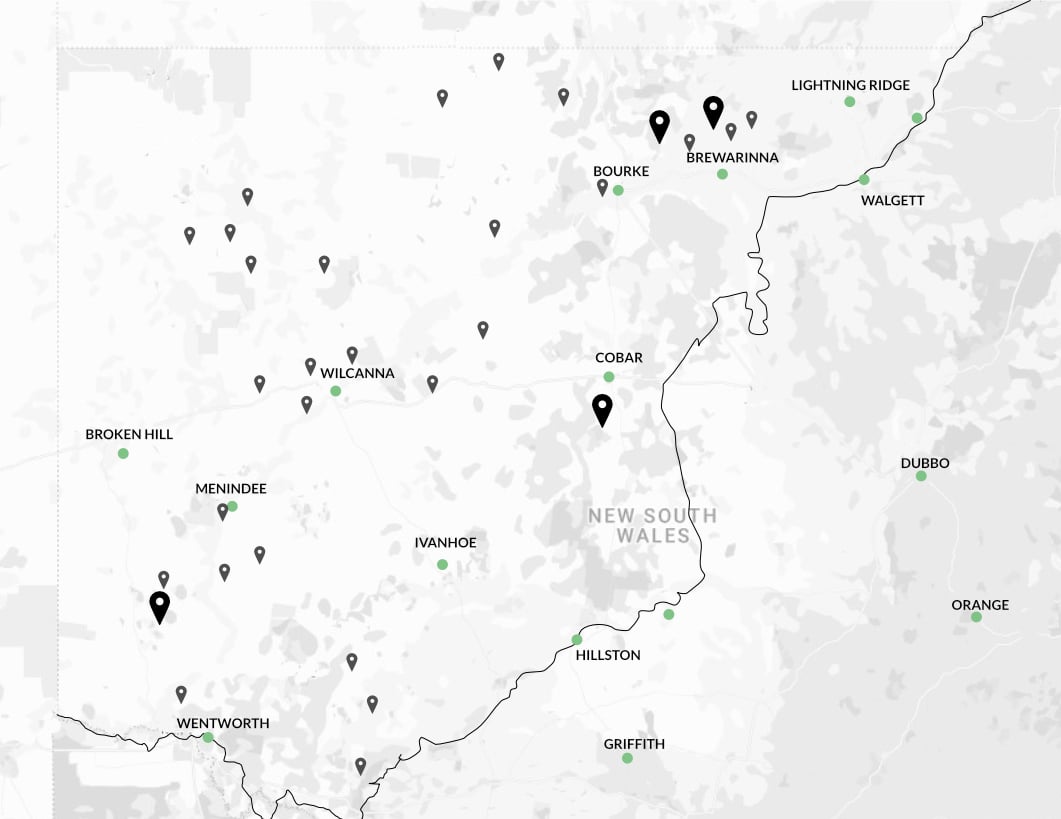
Want to be involved?
To learn more, get involved in on-farm trials, training, field days, customised farm business support and the sharing of knowledge with other producers.
Being part of the observer group offers new information for your business and skills in grazing management, soil biology, pasture assessment, carbon farming and soil monitoring.
Register your interest via the Rangelands Living Skin Expression of Interest form, and join us for:
• Monthly lunchtime learning sessions (one-hour video/phone conversations)
• RCS Grazing, Soil Biology and Soil Sense Clinics
• Ground cover mapping and soil carbon workshops
• Field days
Staff contacts
To receive project updates, results, useful resources and information on field days, contact Luke.beange@dpi.nsw.gov.au.
For more general information contact:
Sarah McDonald
NSW Department of Primary Industries
Trangie Agricultural Research Centre | 7878 Mitchell Highway | Trangie NSW 2823
E: sarah.mcdonald@dpi.nsw.gov.au
Learn more from Soils for Life
News and updates
Check out these news articles, case studies, and blogs:
- Care producer case studies
- Project Newsletter June 2023
- Rangeland Living Skin: Meet some of the project leaders
- Farmer-led research on soil health practices
- Rain-ready in the rangelands
Project partners
|
|
 |
 |
 |
 |
 |
 |
 |
#RangelandsLivingSkin
Follow us on social media -
NSW DPI Soils Unit

